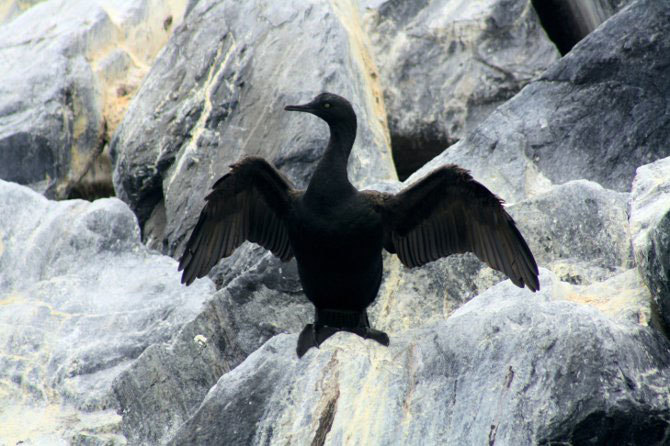Bank Cormorants and Bateleurs: how bird populations are changing
31 March 2015 | Story Animal Demography Unit.
The Animal Demography Unit (ADU) is a boundary institution: our focus is on linking academic science to conservation policy and action. We are housed within the University of Cape Town, but look beyond it into the 'real' world. The obvious way we do this is through our citizen science projects, empowering everyone to be participants in biodiversity science, and to become ambassadors for biodiversity conservation.
Most scientists collect their own data. The ADU is different. As a boundary institution, we have grasped that through citizen science we can achieve an understanding of our biodiversity and our environment on a scale that would otherwise be unthinkable. Citizens have a crucial role to play in scientific data collection.
The ADU has been a pioneer of citizen science in Africa for more than two decades, and aims to be the hub that empowers collective citizen science. Our fundamental citizen science project is the development of up-to-date distribution maps for thousands of species, and to quantify how distributions and abundance are changing. This information (especially the current distribution maps) is the critical first ingredient for all conservation planning and priority setting.
The second way in which we are a boundary institution is through the choice of research projects for our postgraduate students. We aim to tackle questions that provide answers that are of direct relevance to conservation policy and action. In 2014, the four students who graduated – three MSc and one PhD – all had policy- and action-related projects. Megan Loftie-Eaton asked 'What common factors underpin the changes in bird distributions between SABAP1 and SABAP2?' Lorraine Boast asked 'On game-stock farms in Botswana, can predators such as cheetahs coexist with farmers?' And Corlia Meyer and Philna de Villiers asked 'What are the underlying reasons for the ongoing decline in the 'endangered' Bank Cormorant, and what can be done to help this species?' The four research projects were excellent examples of academic research motivated by an identified gap in conservation information needs. The students applied their expertise to the real problem, not to some academic abstraction of it. Here is an overview of these three bird-related projects.
Megan's results suggested that bush encroachment is likely to be the single most important driver of distribution change for many bird species. It favours mostly small insectivores and frugivores, none of which are in threat categories. It disadvantages mostly large species, many in threat categories, such as the Southern Ground-Hornbill, Secretarybird, Bateleur and Martial Eagle.
For the Bank Cormorant, Corlia asked questions in relation to 'climate', especially temperature and storms; and Philna's project was related to 'food', especially looking at the impact of the changing distribution of its main prey in South Africa, the rock lobster. When cormorants become heat-stressed, they exhibit a behaviour known as gular fluttering. Corlia showed that gular fluttering starts at 21°C, and that when the temperature reaches 34°C, the birds are so uncomfortable that they perform this behaviour continuously. Philna demonstrated that the patterns of changing population size of Bank Cormorants, colony by colony, was related to the abundance of rock lobster offshore. At both Robben Island (where the population is stable) and at Stony Point (where the population is increasing), the two projects showed that the colony sizes were limited not by food, but by breeding space that was safe from storms. Philna's MSc ends with a fundamentally practical recommendation, based on the research findings: 'Consideration could therefore be given to the construction of breeding platforms in sheltered bays.' We are pretty confident that this action, if implemented at Stony Point and at Robben Island, will arrest the decline in this endangered species, and enable it to recover.
Story courtesy of the Animal Demography Unit. This story first appeared in the March/April 2015 issue of African Birdlife.
"When I was approached with this research project, I had absolutely no idea what a Bank Cormorant was. Now it is one of my favourite bird species." Read Corlia Meyer's Africa Geographic blogpost on researching Bank Cormorants.
 This work is licensed under a Creative Commons Attribution-NoDerivatives 4.0 International License.
This work is licensed under a Creative Commons Attribution-NoDerivatives 4.0 International License.
Please view the republishing articles page for more information.










